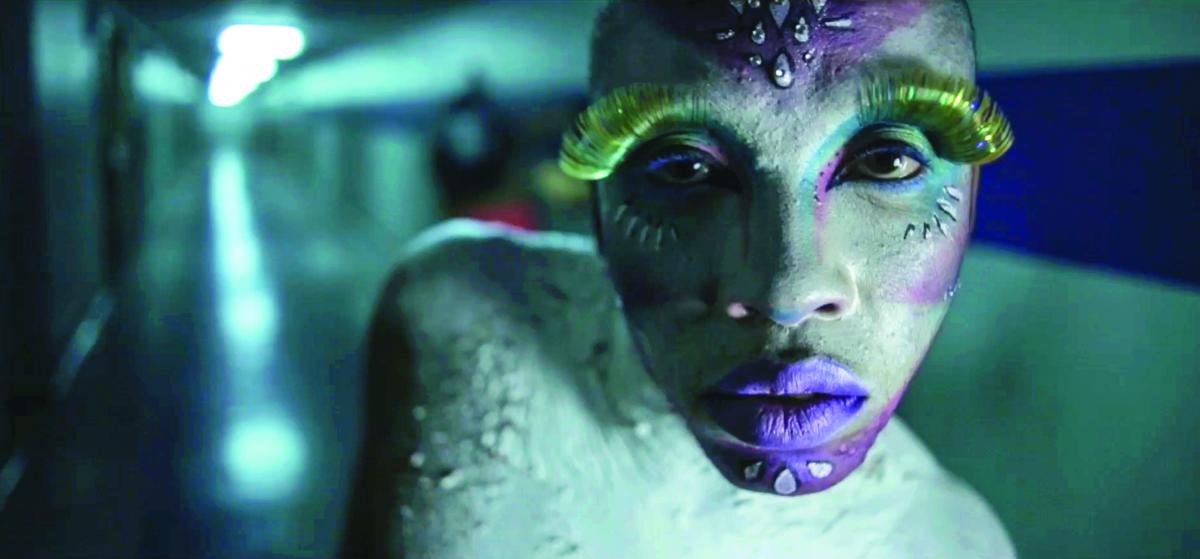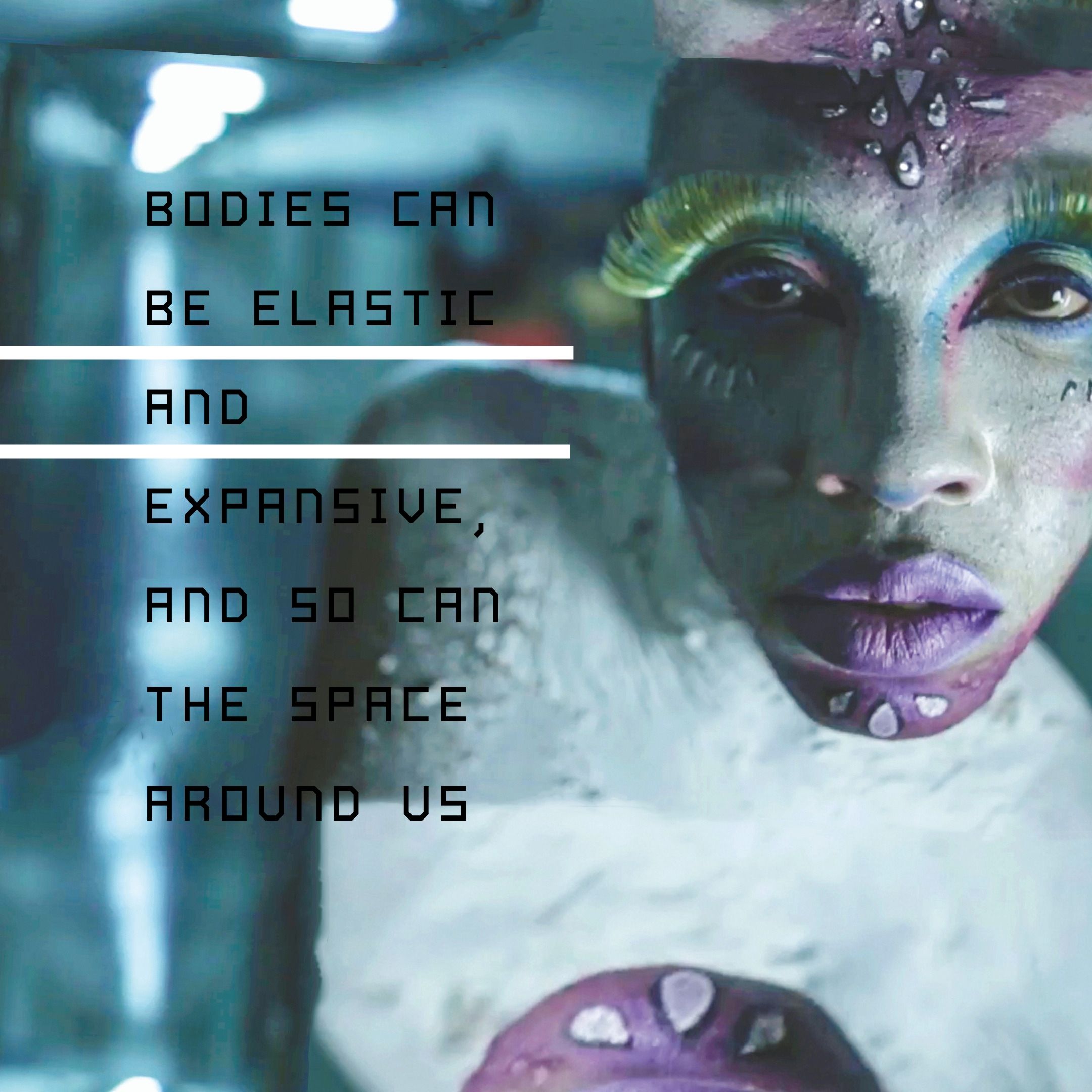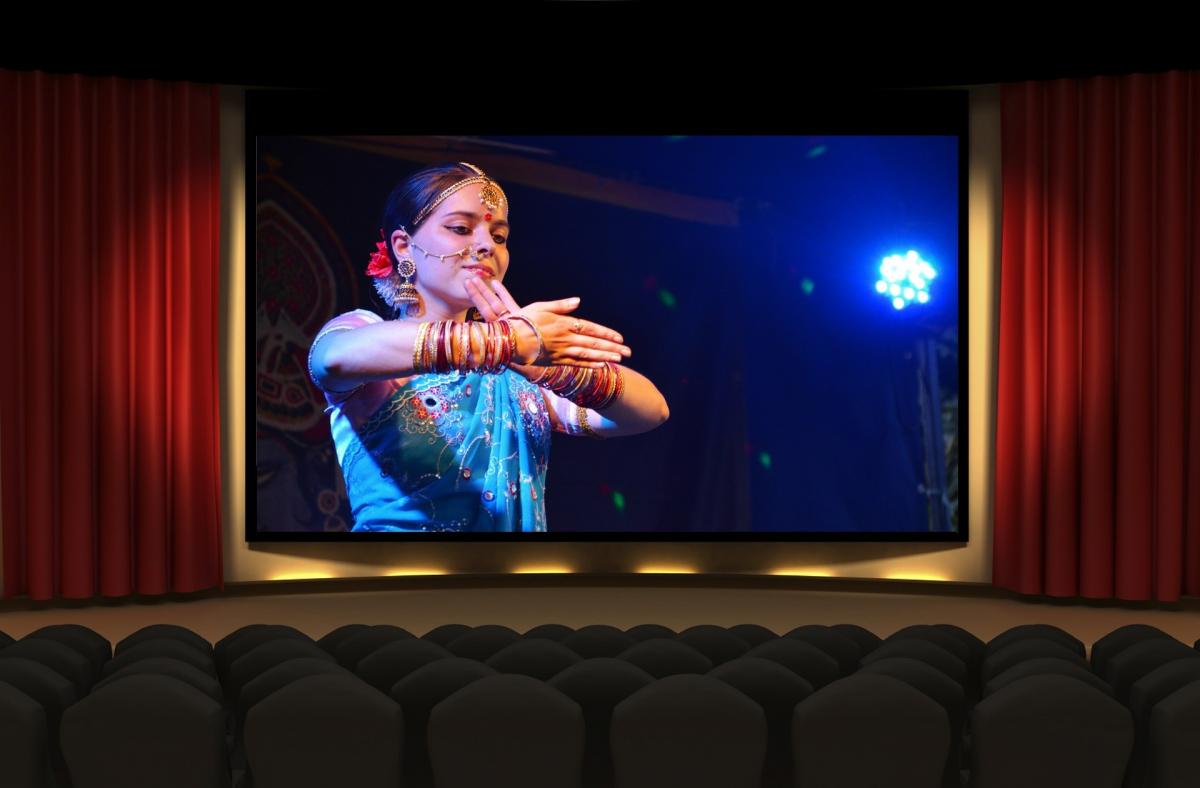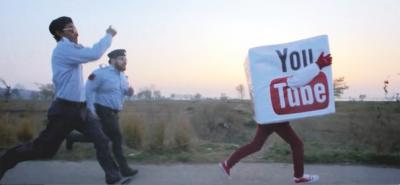
Distorted Processes of Becoming
What reads at first sight as a rather classic «coming out» story is not a linear narrative. In the music video «Magic Man» South African artist Umlilo and director Jasyn Howes produce a temporal and spatial disorder through fragments of moving images. From the Norient book Seismographic Sounds (see and order here).
In «Magic Man» we witness Umlilo’s transformation from a blurred figure to being elevated amidst his two dancers. The auditive and visual narrative points to the process of becoming, which Umlilo links to his experience of being black and queer in today’s South Africa. B Camminga unpacks this in their reading of the clip: a becoming that is a working through the tension between the post-apartheid constitution and post-apartheid homophobia; a becoming performed by the trio with references to Xhosa rituals of masculinity, to the Cape Minstrel Carnival in Cape Town where femininity is traditionally performed by moffies in drag, to the use of bandages in sex and gender transitions. These different elements move together in the dance, not necessarily in sync but hardly against each other: from a narrow, sanitized corridor to a more open and warmer lit space.
Bodies Can Be Elastic and Expansive
What reads at first sight as a rather classic «coming out» story is not a linear narrative, as we see fragments of moving images that produce a temporal and spatial disorder. The elevated figure at the end is followed by images we recognize from the beginning; moving video is projected onto the body and operates as a continual patterning, producing additional layers of skin – a dermal surface of horizontal lines, which in their different ways have the effect of camouflage. Bandages disappear and reappear – a «stylized repetition of acts» that for Judith Butler is so crucial in the performance of gender. The experience of being black and queer hence becomes in itself fragmented; the bandages and the projections are not introduced simply to be left behind, but rather they stay with us, more or less prominent. And while we can read them as obstacles within the process of becoming, it is the media technique, the wave pattern that periodically travels across the surface of the image that offers us a different reading: fragmentation does not necessarily limit mobility, bodies can be elastic and expansive, and so can the space around us. The wave patterns also elicit a different engagement from us, the audience – they produce a surface distortion that seems to challenge the partition between the video and its audience, similar to the forth wall in theater. We are becoming part of Umlilo’s search for «fresh stories, new ideas and people who embrace that». This focus is on the world-to-come, a proposed queerness that, as queer theorist José Muñoz puts it, «we may never touch […] but we can feel as the warm illumination of a horizon imbued with potentiality».
This text was published first in the second Norient book Seismographic Sounds.
Biography
Shop

Published on October 18, 2018
Last updated on April 10, 2024
Topics
From hypersexualised dance culture in baile funk to the empowering body culture in queer lifestyles.
From breakdance in Baghdad, the rebel dance pantsula in South Africa to the role of intoxications in club music: Dance can be a form a self-expression or self-loosing.
Desires are produced personally and impersonally: About music as desiring machine and the elasticity of bodies.
Queer is a verb, not a noun. Thinking & acting queerly is to think across boundaries, beyond what is deemed to be normal.
Special
Snap



